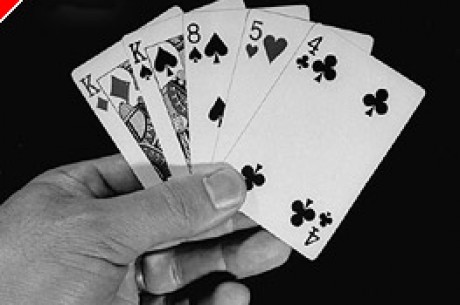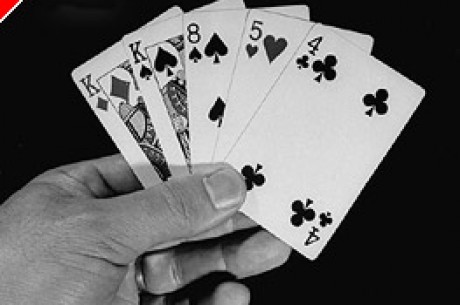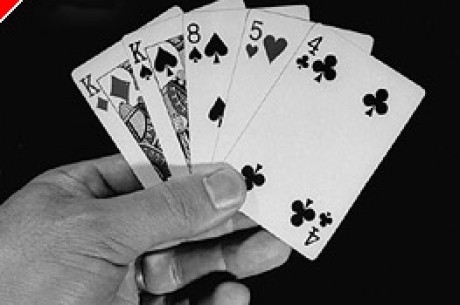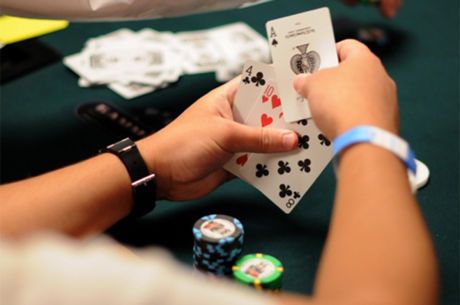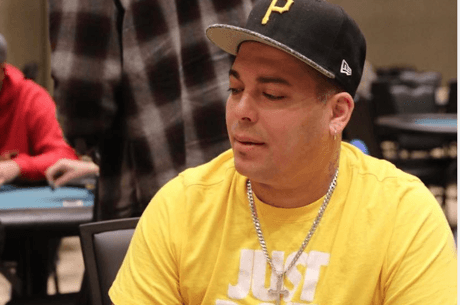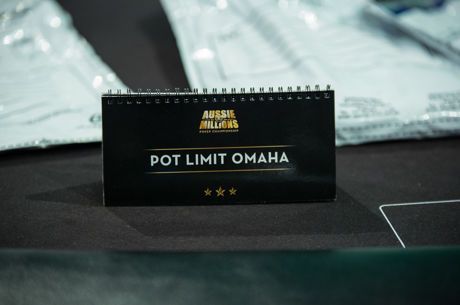Introduction to Omaha - A Counterfeit and A Busted Flush
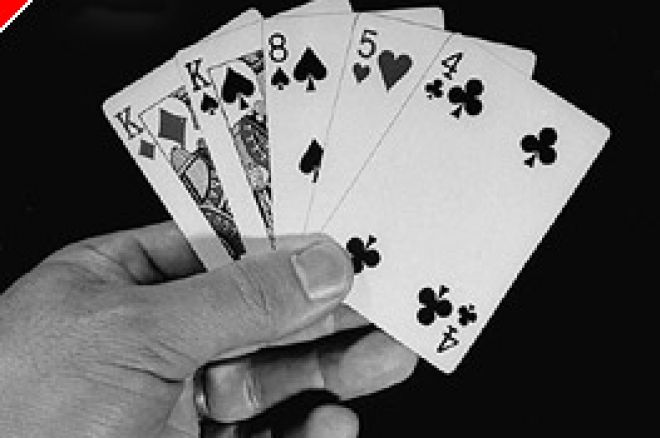
Tony is a regular on-line and card room player living in England. He mostly plays Texas Hold'em and Omaha (High and Split) at fixed, pot and no limit, at both cash and tournament tables.
Introduction
For those of you who have played Omaha Hi/Lo in particular, you will know the pain of seeing a card hit the board which blows a hole in your best-laid plans and snatches a defeat from the jaws of victory! It is a real drag and can result in your stack being decimated on the turn of that one card just as you thought you had at least half a pot won, sometimes three-quarters or, in the worst case, all of it.
Is there anything you can do to keep this kind of damage to a minimum?
A counterfeit calamity
I recently played an on-line cash game at Omaha Hi/Lo and suffered badly when an ace hit the river with a good portion of my chips in. I wasn't looking good for the high side after the flop but I was becoming committed to the pot heads up and I had to decide whether to let my nut low hand run.
The cards on the board were 7 8 6 J so I felt I might be up against a made straight for the high hand. This in turn led me to the conclusion that the opponent was not holding A 2, which I did have. This gave me the temporary nut low hand for half the pot. It is in situations like these when you realise the value of holding three low cards when chasing a low hand. If I held A 2 3, I wouldn't be so concerned since any counterfeiting still gives me the nut low hand albeit at the expense of a pot share if my opponent held A 3 or 2 3.
This also brings into relief the ongoing dangers of starting off betting a pot with a hand holding A 2 and two middling cards. To justify entering a pot at Hi/Lo, those two other cards have to be worthy of being potential contributors to the winning hand. Make them be accompanying low cards or two strong high cards or one of each. Examples are A A 2 3; A K Q 2; A 2 K K; A 2 3 Q.
By not adhering to this discipline, I took a beating!
Having started out betting and got to the above position, it should still have been a case of weighing up whether the balance of chips still to go in was worth the risk. After all, it is likely that the big bet to come will entail me giving away half of it to the high hand. Although I might take the low pot, I only get back little more than my original bets. Yet I stood to lose the lot if an A or 2 appeared on the river. If I held A 2, with a 3 or 4, I would feel happier about the commitment of chips.
The great battle that rages within is being prepared to accept folding when a big loss is only a 6-outer chance, assuming your read on your opponent that he is not holding A 2 is right. It is a difficult decision to fold. Having said this, if your bets already made amount to a sum that is relatively small compared to the potential bets still to come - where the respective stacks remaining in front of the active players are still deep - then it may be a sensible course to fold and wait for a better opportunity. Omaha Hi/Lo really should be played with the aim of scooping the pot or at least getting three-quarters of it.
This brings me to another tale from the same game. Once again I lost out on the river but, having committed to the pot, I couldn't fault my play going all-in this time.
Heart Attack
In retrospect it would be easy to look back on this hand and say I shouldn't have been in it. It was A 2 5 9 and there were two hearts, the 5 and the 9. How nicer it would be if the A were the heart instead of the 5. In practice, that might make the difference between the hand being playable and being a pre-flop fold, especially at pot limit where the cost of an error can be punishing.
We saw a cheap flop and it again came down 8 7 6. This time, the 8 and the 6 were hearts so I have flopped several positives; a made straight (9-high), a made nut low hand, a flush draw and a one-outer draw for a straight flush. On the downside, the straight is not even a temporary nut straight. Anyone left holding 9 10 is in business on the high side. Likewise, my flush draw was weak with all of the heart cards from 10 upwards still out there. Anyone holding a second heart with one of those would also defeat my high hand. At least I could say I had the nut low. Even the 5 lends some mild support in case of a counterfeited A or 2.
So what happened? I decided I would be aggressive with a possible scooping hand and re-raised pot over a pot bet. That person re-re-raised me and I was all-in with the call.
The turn was harmless, but the river was a heart. In my case, this was a stake to the heart because my opponent held Ah 4h together with a 2. The low hand was split and I was never destined for any more of the low pot as his 4 would have been fatal to me had an A or 2 hit the board. My 5 would have been insufficient help.
On the high side, well, that's poker! My straight was leading but the river killed that stone dead and my hearts were woefully inadequate.
Conclusion
It's an old theme in Omaha and one I have banged on about enough times in the past. Only play the best starting hands and don't be seduced by "A 2 rag rag"! I am always proving to myself that I frequently fail to follow my own rigid standards and regrettably it takes a swift kick to the wallet to bring me back on track.
It's no good my whining about the river card. The answer is simple. I should have been the one with the ace or not been there at all!
10 November 2005
Ed Note: Play Omaha at Doyle's Room.

